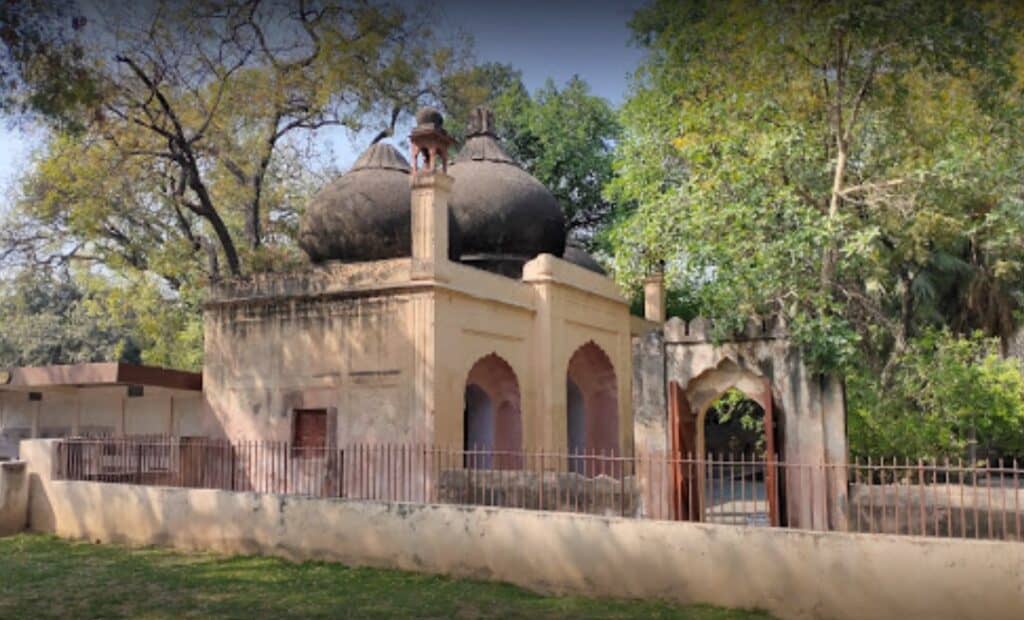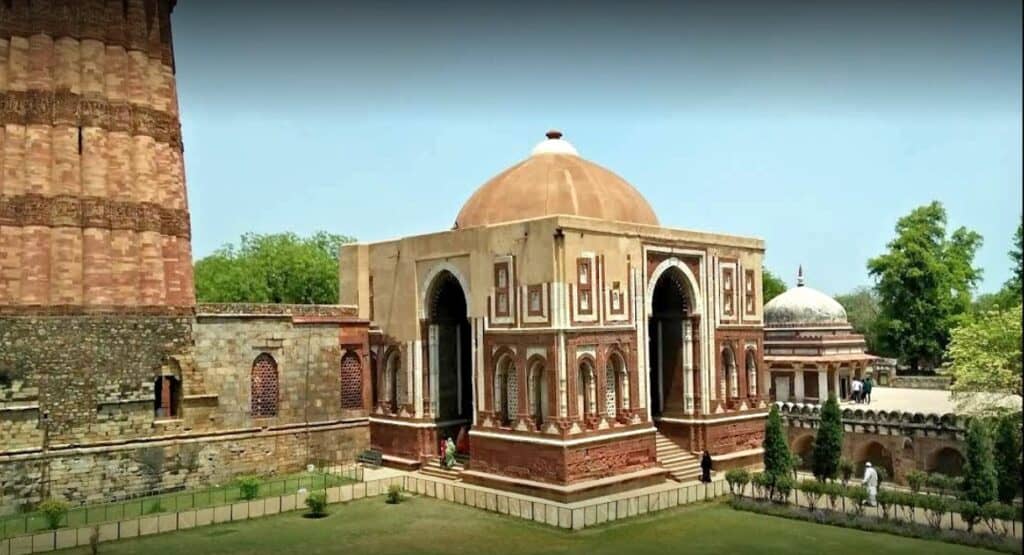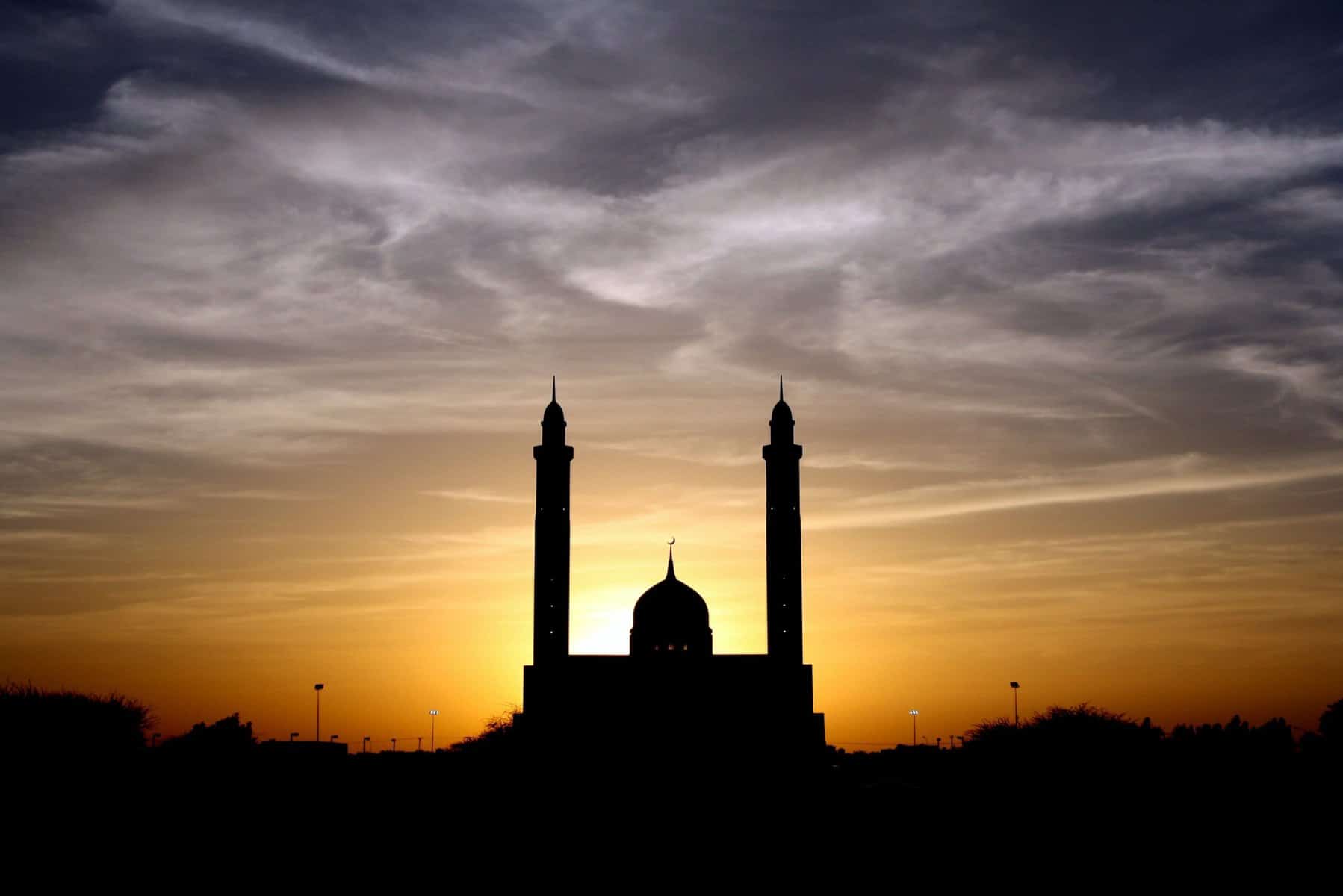The Quwwat-Ul-Islam Mosque or the Jami Masjid is set partially in ruins amiub Minar and other ancient structures. It is called by many the ‘Great Mosque of India’ or the ‘Qutub Mosque’ and lies within the beautiful and ancient expanse of Qutub Complex in South Delhi. Let us explore more about this ancient Mosque, how it was built, by whom, its location etc.
Article Outline
What is Quwwat-Ul-Islam Masjid famous for?



This Mosque is one of the first mosques to be built in India. It is important as it is symbolic of the conquest of India by invaders and the sufferings of Hindus and Jains at their hands. Like the Qutub Minar, even Quwwat-Ul-Islam Mosque was constructed using the stones from the 27 demolished ancient Jain and Hindu Temples.
The entrance of the Quwwat-Ul-Islam Mosque is seen with an ornamental dome or Mandap, which was taken from the demolished Jain Temples and leads to a flight of steep steps into the interior that welcomes you with a stunning view of the inner courtyard fringed with corbelled pillars on either side and decorated with exquisitely carved ceilings depicting Hindu carvings like floral motifs, bells, ropes, tassels, cows and leaves, etc. These pillars were also taken from the debris of the Jain Temples.
Historical Significance
Meaning of Quwwat-Ul-Islam Masjid
The Quwwat-Ul-Islam Masjid means the ‘Might of Islam’ and is a mosque celebrating the Islamic conquest of India.
Who built Quwwat-Ul-Islam Masjid?
The masjid as we see it today was built in parts by three rulers Sultan Qutb-ud-din Aibak. Sultan Iltutmish and Ala-ud-din Khalji.
It was started in 1193 AD by Sultan Qutb-ud-din Aibak of the Mamluk or Slave dynasty as a ‘Jami Masjid’ or ‘Friday Mosque. He ordered the destruction of twenty-seven Hindu and Jain temples to furnish building materials for the construction of one of Delhi’s first mosques.
Architecture Technique of Quwwat-Ul-Islam Masjid
This Masjid shows a typical blend of Hindu and Islamic contours because of how it was created. It is the oldest surviving example of Gurids architecture in the Indian subcontinent. The architecture and design of this Mosque resemble the Arhai-Din Ka Jhompra Mosque in Ajmer, Rajasthan, which was also constructed under the rule of Qutb-ud-din Aibak.
Remarkable Features of Quwwat-Ul-Islam Masjid

- The Qutub Minar was built as an exclusive minaret for the Quwwat-Ul Mosque and is also known as the ‘Minar of Jami Masjid,’ which means the ‘Tower of Quwwat-Ul-Islam Mosque’ from where the Muzim would call people for their prayers.
- It is built in the typical Islamic style of using mud and bricks on the building decorated with glazed tiles. Other materials used were red sandstone, gray quartz, and white marble.
- In 1230 AD, Sultan Iltutmish aka Altamash (successor of Qutb-ud-din Aibak) added three more arches to the existing five to extend the Prayer Hall screen of the Mosque in order to accommodate the increasing number of worshippers. These three arches depict the true Islamic and Arabic styles of architecture, making these three arches unique from the rest.
- Later, in 1315 AD, Ala-ud-din Khalji (Khilji) added the outer courtyard, the Alai Darwaza, and gates on the northern and southern exterior walls of the Mosque.
Location & Timings of Quwwat-One
The Quwwat-ul-Islam Masjid is located in the Qutb Complex at Mehrauli in South Delhi. Samaypur Badli is close to the Qutub Minar complex, and you can easily reach it via metro, bus, or car.
- Nearest metro station: Qutub Minar metro station on the Yellow line.
- Timings: 7 AM to 9 PM all days
- Entry Fee: Rs. 10 per head for Indians and Rs. 250 per head for foreign nationalities. An extra charge of Rs. 25/- per camera for photography and video filming.
Parting Words
A visit to the Quwwat ul Islam Mosque gives a peek into the Mughal history in India. It is enlightening to see the mingling of Hindu and Islamic styles of architecture, and it helps us understand the pains caused by the coming of the Islamic regime in India.
- I Left Delhi Mentally Before I Could Leave Physically - November 28, 2025
- Guardians of the Game: The Critical Role and Unwavering Necessity of Fraud Verification Companies in Korea’s Toto Ecosystem - February 20, 2024
- Discover These Top Scenic Treks near Delhi - January 31, 2024

